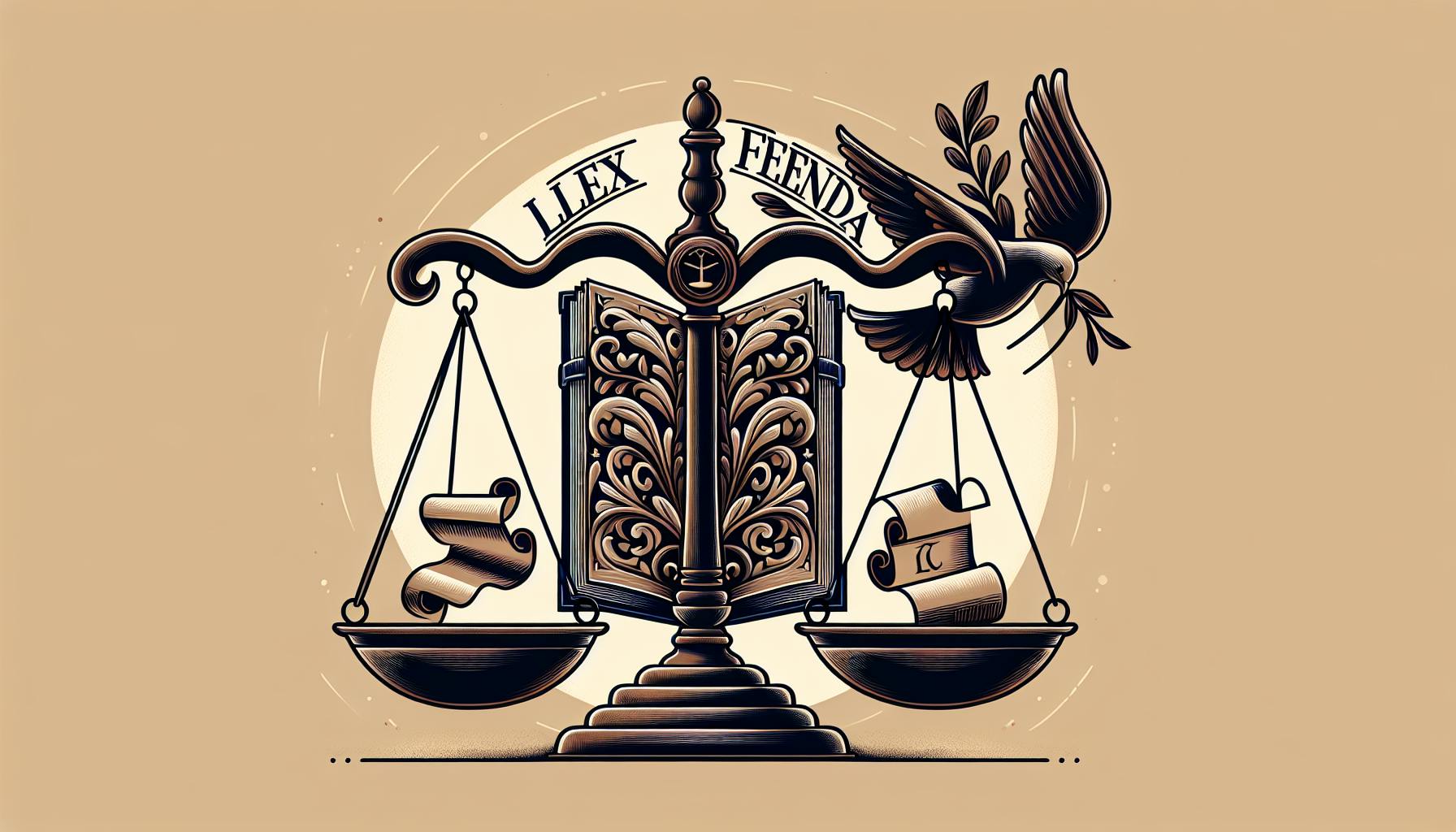Most would agree that the history and provisions of the Wagner Act, a pivotal piece of US labor law, are important to understand.
This article will clearly explain the Wagner Act in simple terms - its historical background, key provisions, the role of the NLRB, subsequent amendments, and its lasting impact on labor relations.
You will learn exactly what the Act did for workers' rights to unionization and collective bargaining, the obligations it placed on employers, its broader purpose and significance, and how it continues to influence labor-management relations today.
Introduction to the Wagner Act
The Wagner Act, officially known as the National Labor Relations Act (NLRA), was a landmark 1935 labor law that guaranteed basic rights of private sector employees to organize into trade unions, engage in collective bargaining, and take collective action like strikes.
Historical Background of Labor Law
The Wagner Act was passed during the Great Depression, when there was immense inequality in bargaining power between employers and employees. It aimed to promote industrial peace and fuel economic recovery by protecting workers' rights.
Prior to 1935, employers would often refuse to recognize or bargain with unions and would terminate or discriminate against employees for union involvement. This led to labor unrest and disruptions. The Wagner Act established legal support for collective bargaining to balance the negotiating power between companies and workers.
Exploring the Key Provisions of the National Labor Relations Act
The National Labor Relations Act guarantees private sector employees the following rights:
- Form or join labor organizations
- Bargain collectively through representatives
- Engage in strikes, picketing, and other concerted activities
- Be free from retaliation or discrimination for exercising these rights
It also prohibits certain unfair labor practices by employers, like interfering with workers exercising their rights or dominating/interfering with labor organizations.
Establishment and Role of the National Labor Relations Board
The NLRA established the National Labor Relations Board (NLRB) as an independent federal agency to administer and enforce the law. The NLRB has two key roles:
- Prevent and remedy unfair labor practices by investigating charges and issuing complaints
- Oversee the process for union organizing and elections
If the NLRB finds an employer guilty of violations, it can issue cease and desist orders and require the employer to post notices about employees' rights.
Amendments to the Wagner Act: Taft-Hartley and Beyond
There have been several amendments to the original 1935 legislation:
-
The Taft-Hartley Act of 1947 prohibited certain union practices like jurisdictional strikes and secondary boycotts. It also allowed states to enact Right-to-Work laws.
-
The Labor Management Reporting and Disclosure Act of 1959 addressed corruption in labor organizations.
-
The Health Care Amendments Act of 1974 extended NLRA coverage to employees of non-profit hospitals.
These amendments placed some restrictions on unions but upheld workers' fundamental organizing and bargaining rights. The NLRA remains the key federal law governing private sector labor relations in the U.S.
What did the Wagner Act do for labor in America?
The Wagner Act, officially known as the National Labor Relations Act (NLRA), was a landmark piece of labor legislation signed into law by President Franklin D. Roosevelt on July 5, 1935. The key provisions of the Wagner Act included:
-
Establishing the right of private sector employees to organize into trade unions, engage in collective bargaining, and take collective action like strikes. This addressed the "inequality of bargaining power between employees...and employers."
-
Creating the National Labor Relations Board (NLRB) as an independent federal agency with the power to enforce the Wagner Act and prevent unfair labor practices by employers.
-
Prohibiting employers from engaging in unfair labor practices like interfering with union organizing, dominating labor organizations, and discriminating against employees for union activity. This helped protect employees' rights.
-
Giving trade unions legal protection and standing before employers and the law. This helped legitimize the role of unions in labor relations.
In essence, the Wagner Act helped balance relations between employers and employees by promoting collective bargaining through trade unions. It was a major victory for the labor movement in America and led to significant growth in union membership over the next decade. However, critics saw it as too pro-union, leading to the Taft-Hartley Act amendments in 1947.
What is the National Labor Relations Act in simple terms?
The National Labor Relations Act (NLRA), also known as the Wagner Act, is a 1935 federal law that protects employees' rights to organize and bargain collectively with their employers. Here is a simple explanation of some key aspects:
-
Grants employees the right to form or join labor unions and engage in collective bargaining with employers. This allows employees to negotiate as a unified group for better wages, benefits, and working conditions.
-
Prohibits employers from engaging in unfair labor practices that interfere with employees' labor rights or discriminate against employees for union involvement. Examples of prohibited practices include threatening employees for union activity or refusing to bargain with union representatives.
-
Established the National Labor Relations Board (NLRB) to administer and enforce the Wagner Act. The NLRB investigates charges of unfair labor practices and conducts union elections.
In essence, the NLRA aims to balance power between employers and employees by enabling employees to organize into unions. It gives them legal protections when exercising rights to organize, strike, picket, and collectively bargain. This addressed the inequality of bargaining power that existed between corporations and individual unskilled workers prior to the law's passage.
The NLRA forms the foundation of U.S. labor relations law. It has been amended over time, such as by the Taft-Hartley Act of 1947. But its core principles and structure remain highly influential today.
Why was the Wagner Act significant?
The Wagner Act, officially known as the National Labor Relations Act (NLRA), was a landmark 1935 labor law that established important rights for most private-sector employees in the United States. Here are some of the key reasons why the Wagner Act was so significant:
-
Established the right to organize and join unions: The Wagner Act made it legal for employees to form or join labor unions and bargain collectively with employers over working conditions, pay, benefits, and more. This gave workers more leverage and addressed the inequality of bargaining power between employers and employees.
-
Prohibited unfair labor practices: The Act prohibited employers from engaging in unfair labor practices like interfering with union organizing, discriminating against union members, firing employees for engaging in lawful union activities, and refusing to bargain with union representatives. This helped protect workers.
-
Created the National Labor Relations Board (NLRB): The NLRB was established to enforce the Wagner Act by investigating charges of unfair labor practices and overseeing union elections. This provided an important mechanism to enforce the new rights.
-
Withstood legal challenges: When the constitutionality of the Wagner Act was challenged, the Supreme Court upheld it in the 1937 NLRB v. Jones & Laughlin Steel Corp case. This cemented the Act's legality.
-
Led to an increase in union membership: In the years after its passage, union membership rose from under 3 million to over 8 million by 1940. This demonstrated the pent-up demand for labor rights.
So in summary, the Wagner Act gave important new rights to employees and unions while prohibiting unfair employer practices - making it one of the most significant labor laws in US history. Its passage led to substantial growth in union membership.
sbb-itb-585a0bc
What was the purpose of the 1935 Wagner Act also called the National Labor Relations Act?
The Wagner Act, officially known as the National Labor Relations Act (NLRA), was a landmark 1935 labor law that protected workers' rights to organize and bargain collectively.
The purpose of the Wagner Act was to encourage collective bargaining and curb unfair labor practices by employers. Specifically, the law:
- Established workers' rights to organize and join labor unions without employer interference or retaliation
- Created the National Labor Relations Board (NLRB) to enforce the law and oversee union elections
- Prohibited employers from engaging in unfair labor practices like intimidating or discriminating against workers for union activity
- Required employers to bargain in good faith with unions certified as representing their employees
The Wagner Act aimed to address the inequality of bargaining power between employers and employees. It gave legal protections to unions and collective action to counterbalance the superior economic power companies held over individual workers.
The law was an important pillar of the New Deal legislation passed during the Great Depression to spur economic recovery. By promoting unionization and raising wages, it sought to increase consumer purchasing power and stimulate economic growth.
The Supreme Court upheld the constitutionality of the NLRA in the 1937 case NLRB v. Jones & Laughlin Steel Corp. The Wagner Act laid the foundation for constructive labor-management relations and continues to govern private-sector labor relations in the U.S. today.
Understanding Employee Rights Under the Wagner Act
The NLRA confers various rights and protections to employees with regards to collective bargaining and union activities.
The Right to Collective Bargaining and Union Representation
The Wagner Act guarantees employees the right to form, join, or assist labor organizations as well as bargain collectively through representatives of their choosing. This means employees can organize into unions that represent their interests in negotiations with employers over wages, hours, and other working conditions.
The law requires employers to recognize and negotiate with these representatives in good faith – known as the duty to bargain. Refusing to recognize or bargain with unions selected by a majority of employees is considered an unfair labor practice.
Protected Concerted Activity and Strike Actions
In addition to collective bargaining rights, employees are also protected in their right to engage in strikes, picketing, boycotts and other concerted activities for mutual aid or protection. Even if a collective bargaining agreement is in effect, employees can undertake economic strikes relating to the agreement.
Employees also have the right to refuse to work in “abnormally dangerous conditions” without losing their job status or rights. This allows employees to protest perceived health and safety issues in the workplace through strikes or work stoppages.
Prohibition of Company Unions and Employer Interference
A major aim of the Wagner Act was to promote free choice and autonomy for employees in union organizing. To prevent employer domination, the law banned the formation of “company unions” – labor organizations created or supported by employers.
The Act also prohibits employers from interfering with, restraining, or coercing employees in the exercise of their rights. Tactics like intimidation, surveillance, discrimination, or retaliation over union activities constitute unfair labor practices.
Ensuring Non-Discrimination in Union Organizing and Activities
The NLRA prohibits discrimination against employees for union membership or support. Employers cannot fire, demote, harass or take other adverse actions against employees who join, support or participate in a labor organization.
Protections also apply to union organizing activities like soliciting membership, distributing literature, wearing insignia, forming committees, or pursuing grievances. Employees have the right to discuss unions and organize during non-work time in non-work areas without discrimination.
Employer Obligations and Unfair Labor Practices
The Wagner Act establishes important legal obligations for employers regarding their employees' rights to organize and collectively bargain. At the same time, it prohibits certain unfair labor practices by employers that could undermine those rights.
Mandate to Engage in Good Faith Collective Bargaining
The Act requires employers to recognize and bargain in good faith with labor unions that have been designated to represent their employees. This means negotiating with the union in a meaningful way regarding wages, hours, and other terms and conditions of employment. Employers cannot refuse to meet or bargain simply because they oppose unions.
Prohibition and Remedies for Unfair Labor Practices
The Wagner Act prohibits employers from interfering with, restraining, or coercing employees who exercise their right to organize and bargain collectively. Examples of prohibited unfair labor practices include:
- Threatening employees for union activity
- Promising benefits to discourage union membership
- Spying on union gatherings
- Discriminating against employees for union membership
If the National Labor Relations Board finds an employer has committed unfair labor practices, it can order remedies such as reinstatement of employees with backpay. Employers must comply with these orders.
Compliance with NLRB Orders and Regulations
Beyond refraining from unfair labor practices, the Act requires employers to comply with all rules and decisions made by the NLRB to enforce the statute. This includes posting informational notices to employees about their rights if so ordered. Non-compliance can result in sanction by the Board.
In summary, the Wagner Act imposes important legal duties on employers to respect their employees' collective bargaining rights. It also empowers the NLRB to remedy and prevent unfair labor practices through its orders and regulations.
Significant Legal Milestones Influencing the Wagner Act
The Wagner Act, also known as the National Labor Relations Act (NLRA), was passed in 1935 and aimed to protect the rights of employees to organize into trade unions, engage in collective bargaining, and take collective action such as strikes. There were several key legal events and court cases that shaped interpretations of the Wagner Act over time.
The Impact of the Taft-Hartley Act on Labor Management Relations
The Taft-Hartley Act was passed in 1947 as an amendment to the NLRA, placing some new restrictions on union activities and power. Key provisions included:
- Prohibiting closed shops which required union membership as a condition of employment
- Enabling states to pass "right-to-work" laws restricting union membership requirements
- Prohibiting some forms of strikes, picketing and boycotts
- Requiring union leaders to sign affidavits stating they were not communists
This controversial law marked a shift in US labor policy, aiming to reign in the power of unions. It led to a decline in union membership over subsequent decades.
The Supreme Court's Decision in NLRB v. Jones & Laughlin Steel Corp.
This 1937 Supreme Court case upheld the constitutionality of the NLRA, ruling that the federal government had the authority to regulate labor relations. The court found that labor disputes could have significant impacts on interstate commerce, and therefore Congress was within its rights to pass laws protecting workers' right to organize and collectively bargain.
This case was essential in cementing the Wagner Act as fair and lawful, paving the way for its ongoing enforcement by the National Labor Relations Board (NLRB). It enabled more robust federal protections for unions nationwide.
State-Level Right-to-Work Laws and Their Effects on Trade Unions
Right-to-work laws prohibit union security agreements, which require employees to join a union or pay dues as a condition of employment at unionized workplaces. These laws weaken the power of unions by reducing their membership and funding.
As of 2023, 27 states have passed right-to-work laws. Research indicates that in right-to-work states, union membership tends to be significantly lower, union organizing is more challenging, and workers have less bargaining power compared to non-right-to-work states. This can enable employers to more readily oppose unionization efforts.
Conclusion: The Enduring Legacy of the Wagner Act
The Wagner Act established basic collective bargaining rights and continues to serve as the foundation for US private sector labor relations.
Summarizing the Wagner Act's Role in Employee Rights
The Wagner Act guarantees basic employee rights like freedom of association, protected union activities, collective bargaining through chosen representatives, and recourse against unfair labor practices. By promoting workplace democracy, it aims to reduce inequality in bargaining power between employers and employees.
Some key employee rights under the Act:
- Form or join trade unions without employer interference
- Engage in organized activities like strikes for mutual aid or protection
- Bargain collectively through chosen representatives
- Be protected from employer retaliation for exercising these rights
Assessing the Ongoing Influence on Labor-Management Relations
By promoting industrial democracy, the Wagner Act shaped private sector management-labor relations in the US. Its principles were upheld by the Supreme Court and later laws like the Taft-Hartley Act built upon it.
Key influences:
- Established collective bargaining as the basis for US labor relations
- Formed the foundation for subsequent labor legislation
- Led to an expansion of trade unions and collective bargaining agreements
- Continues to guarantee basic employee rights and protections
So while amended over time, the core rights and structure put forth by the Wagner Act persists as a cornerstone of labor relations.


